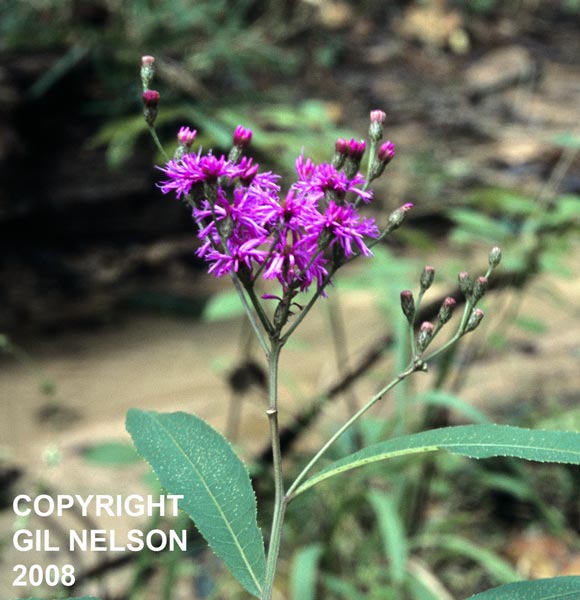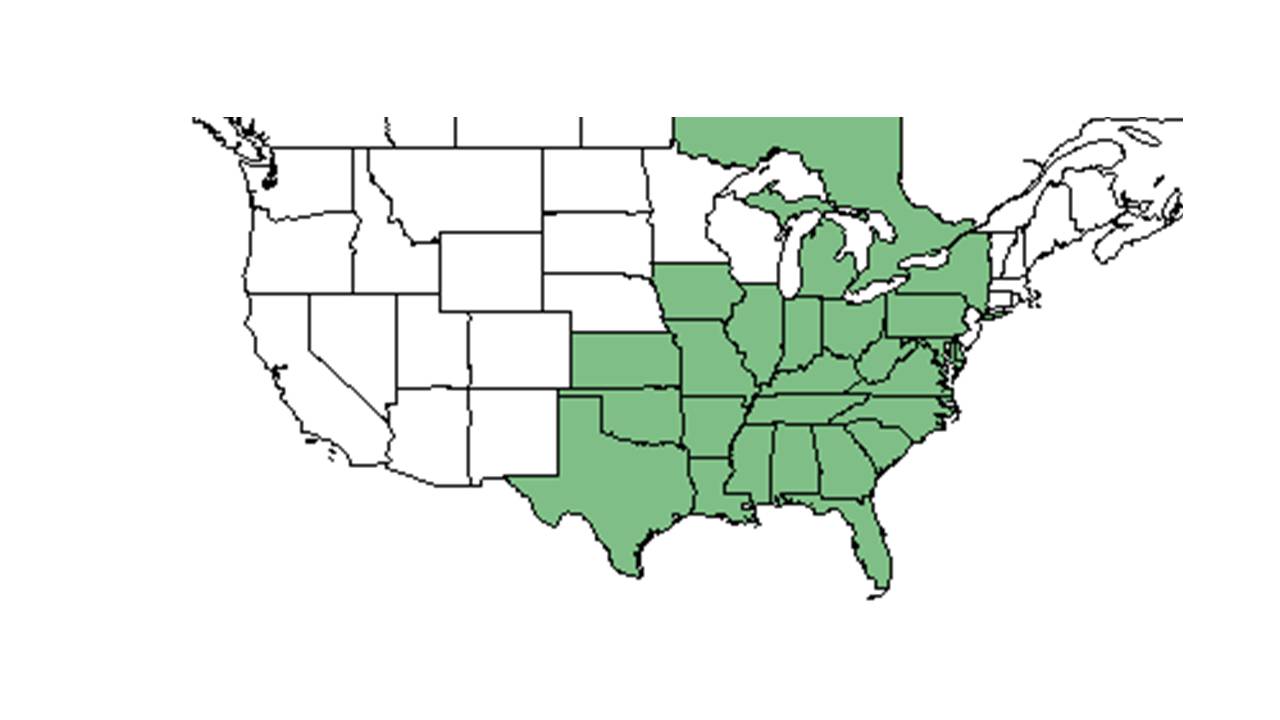Difference between revisions of "Vernonia gigantea"
KatieMccoy (talk | contribs) |
KatieMccoy (talk | contribs) |
||
| Line 27: | Line 27: | ||
==Ecology== | ==Ecology== | ||
===Habitat=== <!--Natural communities, human disturbed habitats, topography, hydrology, soils, light, fire regime requirements for removal of competition, etc.--> | ===Habitat=== <!--Natural communities, human disturbed habitats, topography, hydrology, soils, light, fire regime requirements for removal of competition, etc.--> | ||
| − | + | In the Coastal Plain, ''V. gigantea'' has been found in loam soil atop of a ravine; loamy sand in mesic hardwoods; river hammocks; marshes; floodplain forests; upland mixed forest; shortleaf pine-post &red oak-mockernut woods; pine-oak-hickory woods in a ravine; annually burned upland pineland; calcareous slopes; sandy loam in mature hardwoods; sandy open live oak hammocks; sand beneath cabbage palm thicket; calcareous mixed flatwoods hammocks; hammock surrounded by marsh; lowland forests habitats; and sandy peat in a clearing of cabbage palm-live oak hammock (Emery et al. 2011; FSU Herbarium). It is found in disturbed successional areas (Emery et al. 2011) along with moist loam of roadside depressions; loamy sand along edge of channel; open mixed hardwood forest between power-line and road; along powerline corridors; and grassy clearings of pine-palmetto flats. Substrate types include loam, loamy sand, sandy loam, calcareous soils, limestone, sand, and sandy peat (FSU Herbarium). | |
| + | |||
| + | Associated species include ''Eupatorium fisulosum, Arnoflossum ovatum, Smilax bona-nox, Morus rubra, Campsis radicans'', and cabbage palm (FSU Herbarium). | ||
| + | |||
===Phenology=== <!--Timing off flowering, fruiting, seed dispersal, and environmental triggers. Cite PanFlora website if appropriate: http://www.gilnelson.com/PanFlora/ --> | ===Phenology=== <!--Timing off flowering, fruiting, seed dispersal, and environmental triggers. Cite PanFlora website if appropriate: http://www.gilnelson.com/PanFlora/ --> | ||
===Seed dispersal=== | ===Seed dispersal=== | ||
Revision as of 12:46, 15 October 2015
| Vernonia gigantea | |
|---|---|

| |
| Photo taken by Gil Nelson | |
| Scientific classification | |
| Kingdom: | Plantae |
| Division: | Magnoliophyta – Flowering plants |
| Class: | Magnoliopsida – Dicotyledons |
| Order: | Asterales |
| Family: | Asteraceae ⁄ Compositae |
| Genus: | Vernonia |
| Species: | V. gigantea |
| Binomial name | |
| Vernonia gigantea (Walter) Trel. | |

| |
| Natural range of Vernonia gigantea from USDA NRCS Plants Database. | |
Common name: giant ironweed
Contents
Taxonomic notes
Description
A description of Vernonia gigantea is provided in The Flora of North America.
Distribution
Ecology
Habitat
In the Coastal Plain, V. gigantea has been found in loam soil atop of a ravine; loamy sand in mesic hardwoods; river hammocks; marshes; floodplain forests; upland mixed forest; shortleaf pine-post &red oak-mockernut woods; pine-oak-hickory woods in a ravine; annually burned upland pineland; calcareous slopes; sandy loam in mature hardwoods; sandy open live oak hammocks; sand beneath cabbage palm thicket; calcareous mixed flatwoods hammocks; hammock surrounded by marsh; lowland forests habitats; and sandy peat in a clearing of cabbage palm-live oak hammock (Emery et al. 2011; FSU Herbarium). It is found in disturbed successional areas (Emery et al. 2011) along with moist loam of roadside depressions; loamy sand along edge of channel; open mixed hardwood forest between power-line and road; along powerline corridors; and grassy clearings of pine-palmetto flats. Substrate types include loam, loamy sand, sandy loam, calcareous soils, limestone, sand, and sandy peat (FSU Herbarium).
Associated species include Eupatorium fisulosum, Arnoflossum ovatum, Smilax bona-nox, Morus rubra, Campsis radicans, and cabbage palm (FSU Herbarium).
Phenology
Seed dispersal
Seed bank and germination
It seems that heating at low temperatures stimulates germination in V. gigantea. It had a 3% average germination rate under control (25 degrees Celsius) conditions, but slightly higher rates when exposed to direct flame (Emery et al 2011).
Fire ecology
It seems to thrive after low-intensity fires (Emery et al 2011).
Pollination
Use by animals
Diseases and parasites
Conservation and Management
Cultivation and restoration
Photo Gallery
References and notes
Emery, S. M., J. Uwimbabazi, et al. (2011). "Fire intensity effects on seed germination of native and invasive Eastern deciduous forest understory plants." Forest Ecology and Management 261: 1401-1408.